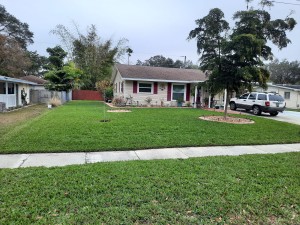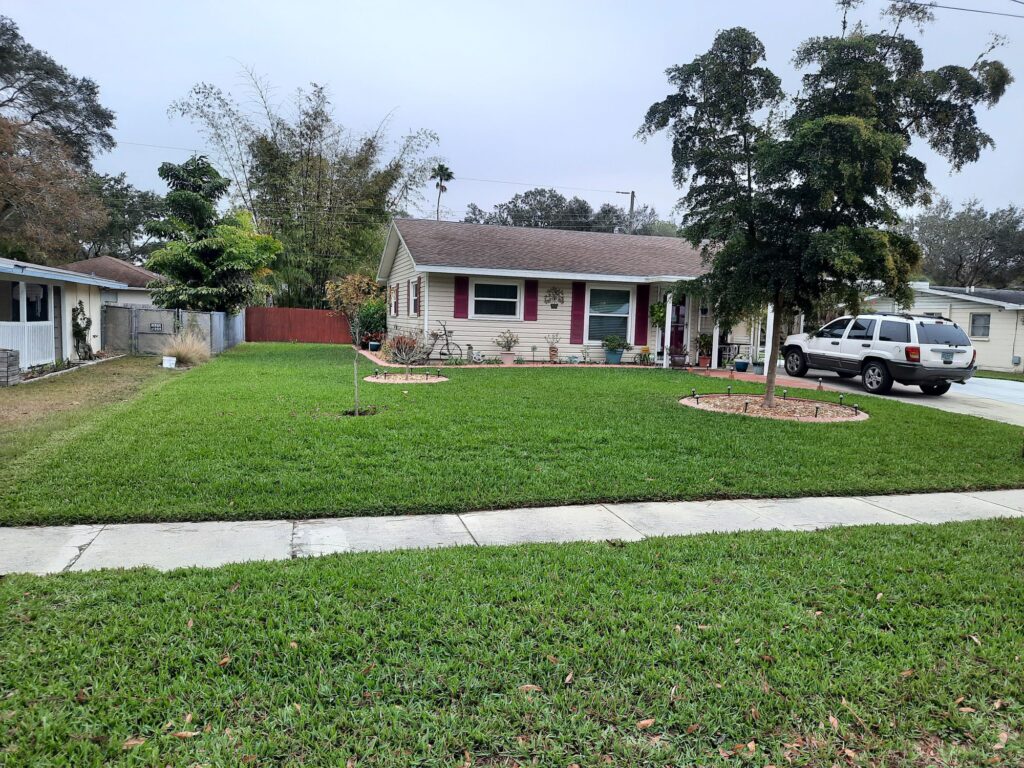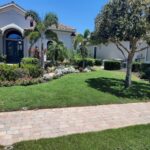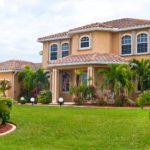 When you look at your lawn, can you tell what kind of grass is growing? Different types of grass may all be green, but they are certainly not the same. If you build a home, you may know exactly what kind of grass is growing in your yard. But if your home came with a lawn, it can be a guessing game as to what type of grass is growing out there.
When you look at your lawn, can you tell what kind of grass is growing? Different types of grass may all be green, but they are certainly not the same. If you build a home, you may know exactly what kind of grass is growing in your yard. But if your home came with a lawn, it can be a guessing game as to what type of grass is growing out there.
Knowing the type of grass you have in your yard can help with making sure your lawn stays lush and healthy.
Location, Location, Location
Your location is the first clue as to what type of grass you have. Southern states are better suited for warm-season grass species, such as St Augustine, bahiagrass, and Bermuda grass. Warm-season grasses are usually more resistant to drought and heat and grow well with full sun and in temperatures between 80-95 degrees Fahrenheit.
Common Warm-Season Grasses
St. Augustine is a warm-season turfgrass. Floratam St. Augustine is the most common variety of St. Augustine Grass in this area. It is popular for its dense growth, vibrant green color, and ability to tolerate heat and humidity. Floratam does great in full sunlight. In addition, it can tolerate a range of soil types, including sandy, loamy, and clay soils. It has moderate salt tolerance, making it suitable for coastal areas with occasional saltwater exposure. We like it because it holds up well with pets and regular amounts of activity. St. Augustine grass has broad, flat, and coarse-textured blades. The blades are a medium to dark green color and can vary in width and length depending on the specific variety.
Bermuda grass has tiny hairs on blades of fine-textured, hardy grass. Commonly used as a perennial lawn grass, Bermuda grass also is known as devil’s grass, scutch grass, and dog’s tooth grass. It is a good choice for lawns because it is hard-wearing, resistant to heat, and withstands large amounts of traffic. Bermuda grass even grows well in poor soil conditions, but this resilient grass does need to be planted in soil with good drainage. Bermuda grass should be planted in areas with bright light and little shade. It is grayish-green or dark bluish-green in color and has short, flat blades about 2-6 millimeters wide with rough edges. The deep root system of Bermuda grass gives this type of grass the ability to withstand droughts. It forms a dense mat of lush turfgrass thanks to how thick it grows. If you live near a coastal area, Bermuda grass is a good choice, as it is more resistant to salt.
Here at Bayside Sod, we have Bimini Bermuda Grass. This is an improved hybrid Bermuda that forms a fine textured, dense turf with a beautiful dark green color and upright leaf growth. One of the most durable turfs available, it was developed specifically for athletic applications (think golf courses and soccer fields). Its soft texture is not only good for athletes on the field, but it’s also good for you to hang out on at home.
Bahia grass has medium to broad blades with pointed tips. It is an excellent choice for sod in areas that have sandy, acidic soils. Bahia grass is also known as Bahia and grows in sub-tropical climates. It is hard-wearing and is used where low-maintenance, heat-tolerant, and drought-resistant lawns are required. Bahia is a low-growing grass that spreads through creeping stolons, resulting in a dense turfgrass that is resistant to foot traffic. Bahia grass blades are hairless and relatively wide. Its blades are flat and folded and taper to a point.
Bahia grass is valued because it can thrive where many types of grass falter, but it is only used in a small region of the southeastern United States. Here it produces a relatively durable, low-growing, low-maintenance turf. Bahia grass is the only variety that does not require an irrigation system.
Identifying Grass Types
Grass types are identified by examining blade width, blade shape, and blade tip. Growth habits are another way to tell different grass species apart, as some types of grass tend to grow in clumps. Another indicator is new shoots of grass, called stolons. Some types of grass grow above-ground stems, while others grow below-ground stems or even both types of stems.
If you need help, then you’ve come to the right place because we know our grass. Let us help make your lawn looks its best with high-quality sod. Contact Bayside Sod for a free estimate and consultation.





